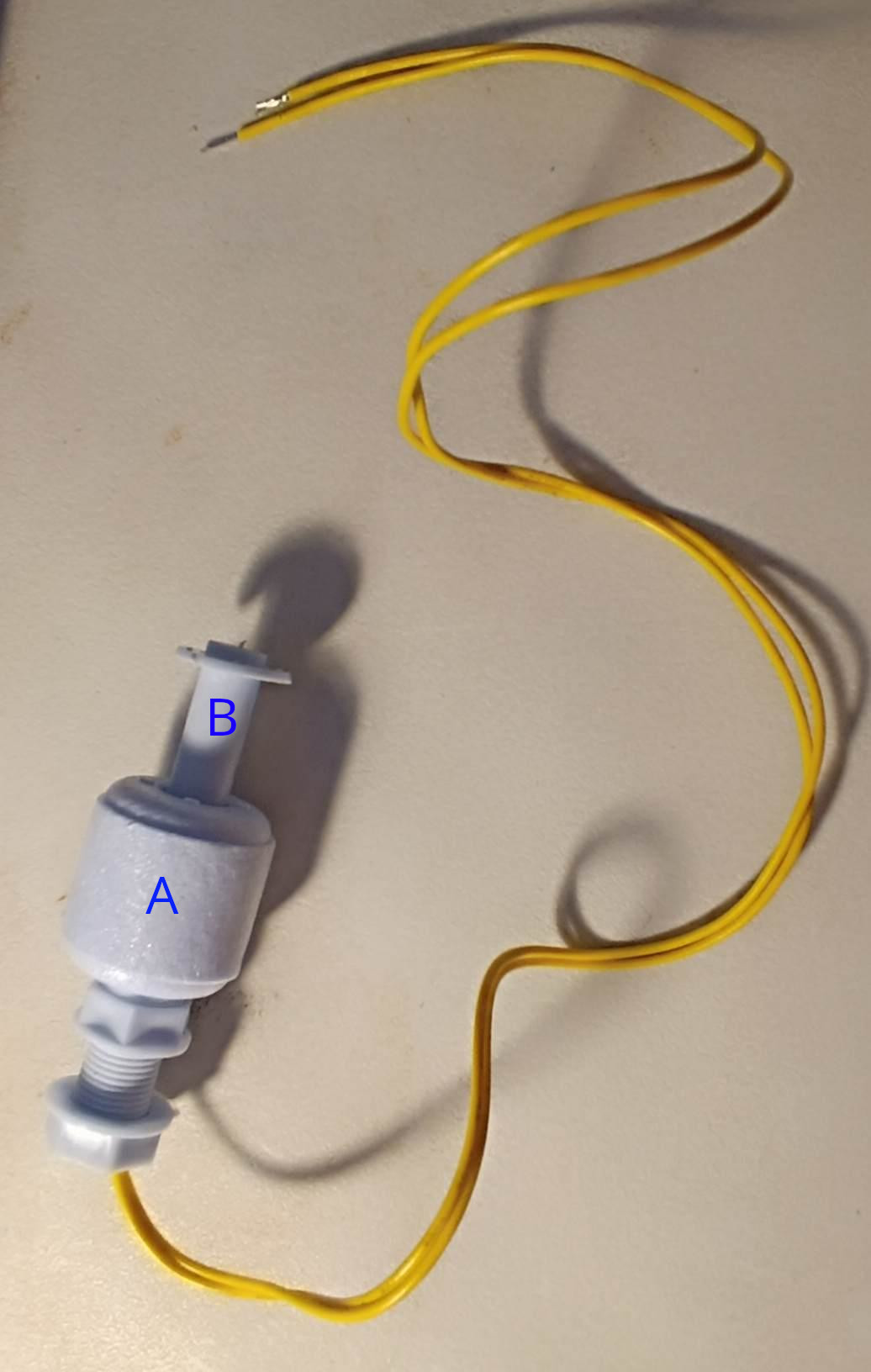Pure Electronics
 ←Index
←Index
Float Switches
by Professor Petabyte

Mouseover to Zoom
Introduction
A float switch is a type of liquid level sensor that uses a float to detect the level of liquid in a tank or container. When the liquid level rises or falls to a certain point, the float triggers a switch, which can then be used to control other devices like pumps, alarms, or valves.
How they Work
There are several types of float switch:
- Vertical float switches : These are mounted vertically in a tank and are activated by the up and down movement of the liquid level.
- Horizontal float switches : These are mounted on the side of a tank and are activated by the liquid level reaching a specific height.
- External float switches : These are mounted on the outside of a tank and use a magnetic field to detect the liquid level inside.
- Submersible float switches : These are designed to be submerged in the liquid and are typically used in sumps and tanks.
The Float Switch pictured on the right is a Submersible float switch.
- The float is typically attached to a pivoting arm, shaft or cable, and it floats on the surface of the liquid.
- As the liquid level changes, the float moves up or down, causing the arm or cable to actuate a switch.
- The switch can be normally open (NO) or normally closed (NC), meaning it can either complete or break an electrical circuit when activated.
- This change in the circuit can then be used to trigger other devices.
In the case of the Submersible Float Switch pictured, the Float (A) is free to slide up and down the Shaft (B). The unit is placed into the liquid and floats with the wires extenind out of the top. The Shaft at this point has a vertical orientation, with (B) at the bottom. Inside the Float is a magnet. Inside the Shaft is a Reed switch. When the fluid level becomes low, the end of the shaft (at B) touches the bottom of the fluid container, and eventually as the fluid level falls, the float (A) slides down the Shaft until the Magnet inside A lines up with the Reed switch inside B, and the circuit is closed signifying low fluid level.
This type of sensor is obviously simple and therefore relatively inexpensive, however it is only capable of indicating two states - Empty vs Not-Empty. It has no more concise recognition of the fluid level, and cannot indicate for example 75% full, 50% full or 25% full, just Empty or Not Empty.
Where it is important to have an approximate reading of fluid remaining a different type of sensor is required.
Common uses:
- Pumping systems:
Float switches are frequently used in sump pumps to automatically turn the pump on when the water level gets too high and off when it gets too low, preventing the pump from running dry.
- Filling systems:
They can also be used to control the filling of tanks, automatically stopping the flow of liquid when the desired level is reached.
- Alarms:
Float switches can be connected to alarms to signal when a liquid level reaches a critical high or low point.
- Industrial applications:
They are used in various industrial processes to monitor and control liquid levels in tanks, reservoirs, and other containers.
- Advantages:
Simple and reliable: Float switches are relatively simple devices with few moving parts, making them reliable and easy to maintain.
- Cost-effective:
They are generally inexpensive compared to other types of level sensors.
- Versatile:
They can be used in a wide range of applications and with various liquids.
- Automatic control:
They can automate the control of pumps, valves, and other devices, saving energy and preventing issues caused by manual monitoring.
© 2025 Professor Petabyte

 ←Index
←Index
